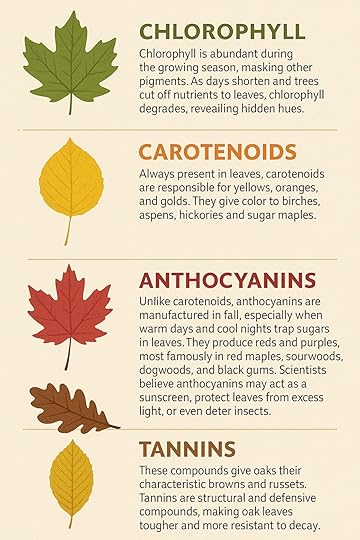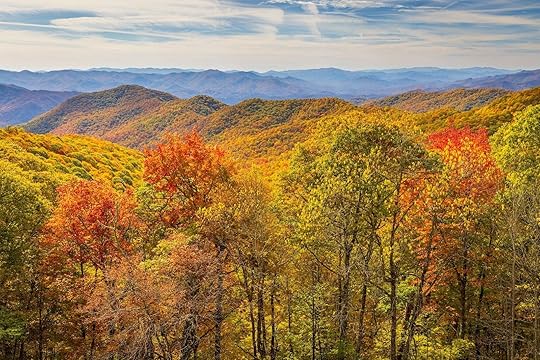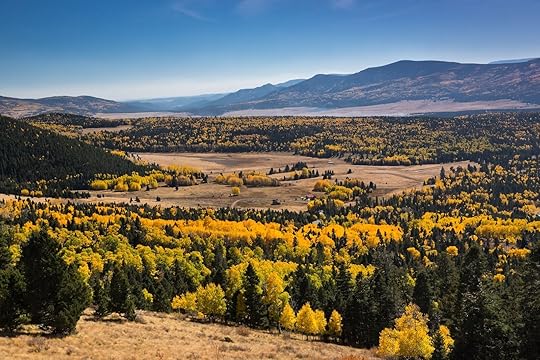Planning a Fall Foliage Trip? Here’s Why Colors Vary in Each US Region and What to Expect

Deciduous trees dramatically drop their leaves every fall around the world. And though the process of the changing colors is similar, it looks just a little different everywhere you go thanks to the types of trees native to (and adapted to) each place.
In the United States, New England gets most of the attention for its patchwork of colors, while leaf peepers in the Rocky Mountains know to expect mountains covered in golden aspens. Those are far from the only places with stunning fall foliage, though, whether you want to travel by train or focus just on national parks. Or maybe you just want to spend a long weekend in an Airbnb surrounded by the colors of the season. Local plant species, the weather that year, and shorter days all play a role in exactly when and how vibrant the colors are regardless of location.
As long summer days shorten, trees sense the longer nights and gradually shut down chlorophyll production. Chlorophyll makes leaves green, and when it fades, yellow and orange carotenoids that are already in the leaves shine through. At the same time, temperature and weather shape the vibrancy of those hues. Warm, sunny days paired with cool, but not freezing, nights trap sugars in leaves and trigger the production of anthocyanins, the pigments responsible for brilliant reds and purples, in some trees. Too much rain, drought stress, or an early frost, however, can dull colors or cause leaves to drop before they peak.
But the most important factor is where you are and what trees grow there. Without the trees, there are simply no fall colors.
The science behind which trees turn which color
Infographic: Matador Network
Leaves contain pigments that absorb and reflect different wavelengths of sunlight. Chlorophyll absorbs red and blue light but reflects green light, for example, so that’s why healthy leaves appear green. When chlorophyll breaks down in autumn, it no longer dominates the spectrum so the pigments that remain become visible.
Chlorophyll: This green pigment is abundant during the growing season, masking other pigments. As days shorten and trees cut off nutrients to leaves, chlorophyll degrades, revealing the hues underneath.
Carotenoids and flavonols: Always present in leaves, carotenoids are responsible for yellows, oranges, and golds found in birches, aspens, hickories, and sugar maples. Chemically stable, these pigments remain to show off their colors once chlorophyll degrades. Flavonols often overlap with carotenoids and show a more subtle pale yellow.
Anthocyanins: Trees make anthocyanins in the fall, especially when warm days and cool nights trap sugars in leaves. They produce reds and purples in trees like red maples, sourwoods, dogwoods, and black gums. It’s the same compound that makes flowers purple and pink, gives blueberries and blackberries their color, and turns eggplant skin purple. There are a couple of theories why trees make anthocyanins in the fall. One is that it acts as sunscreen when the chlorophyll degrades. Or the compounds may act as antioxidants as the tree shuts down for the winter just as anthocyanins help humans get rid of free radicals in their body — with the added benefit of deterring pests looking for a safe place to lay their eggs.
Tannins: These compounds give oaks their characteristic browns and russets. Tannins are structural and defensive compounds, making oak leaves tougher and more resistant to decay. Tannins are what’s left to give the leaves their color once the other pigments have faded, according to The Farmer’s Almanac.
What trees and colors to expect in regions across the USFall colors start farther north and head south as the season progresses — with some variation where higher altitudes turn first. Alaska comes first in August. Northern Minnesota, Maine, and the Rockies can see changes as early as mid-September. The Northeast, Great Lakes, and lower elevation areas of the Mountain West generally peak in October. The South and Texas Hill Country can out even into late November.
The exact timing predictions vary year by year, but here’s what trees and colors you can expect to see in the fall in each region — and some parks and scenic byways to catch all the colors.
Northeast and New England
Bog River near Tupper Lake in Adirondack Park, New York. Photo: pics721 /Shutterstock
Trees and colors:
Orange-red sugar maplesScarlet red maplesGolden yellow birchesRed-to-russet oaksTypical peak: Late September in northern Maine, Vermont, and New Hampshire; early October in the Adirondacks; mid-to-late October across Massachusetts, Connecticut, and Rhode Island.
Where to go:
Kancamagus Highway in New HampshireGreen Mountain Byway in VermontAdirondack High Peaks Scenic Byway in New YorkAcadia National Park in MaineMid-Atlantic and Appalachians
Great Smoky Mountains National Park. Photo: Weidman Photography/Shutterstock
Trees and colors:
Golden bronze hickoriesCrimson sourwood and black tupeloPurple-red dogwoodsRed-to-russet oaksTypical peak: Mid-October in Pennsylvania and Virginia; late October into early November across the Blue Ridge and Great Smoky Mountains.
Where to go:
Blue Ridge Parkway in Virginia and North CarolinaSkyline Drive in Shenandoah National Park, VirginiaGreat Smoky Mountains National Park in Tennessee and North CarolinaMidwest and Great Lakes
Cuyahoga Valley National Park in Ohio. Photo: Wildnerdpix/Shutterstock
Trees and colors:
Orange-red sugar maplesGolden yellow aspens and birchesGolden bronze hickoriesRed-to-russet oaksTypical peak: Early-to-mid October across northern Michigan, Wisconsin, and Minnesota; mid-to-late October in the southern Great Lakes states of Ohio, Indiana, and Illinois.
Where to go:
Door County, WisconsinM-22 Scenic Drive in MichiganCuyahoga Valley National Park in OhioGreat River Road in IllinoisRockies and Intermountain West
Angel Fire, New Mexico. Photo: Jim and Lynne Weber/Shutterstock
Trees and colors:
Golden aspensYellow narrowleaf cottonwoodsOrange-red Gambel oaksTypical peak: Late September to early October at high elevations in Colorado, Wyoming, Utah, and Montana; mid-October in valleys.
Where to go:
Trail Ridge Road in Rocky Mountain National Park, ColoradoGrand Teton National Park in WyomingEnchanted Circle Scenic Byway near Taos, New MexicoLogan Canyon Scenic Byway in UtahPacific Northwest
Columbia River Gorge National Scenic Area in Oregon. Photo: Bob Pool /Shutterstock
Trees and colors:
Golden western larches (the only deciduous conifer)Yellow bigleaf maplesRed-and-orange vine maplesRust-colored alders and cottonwoodsTypical peak: Mid-to-late October in the Cascades and Olympics; early November in lower elevations and coastal valleys.
Where to go:
North Cascades National Park in WashingtonColumbia River Gorge in Oregon and WashingtonMount Rainier National Park in WashingtonSilver Falls State Park in OregonSouth
Lost Maples State Natural Area in Texas Hill Country. Photo: Silvio Ligutti/Shutterstock
Trees and colors:
Red-and-purple sweetgumsOrange-yellow sassafrasRed dogwoodsGolden-bronze hickoriesRusset oaksTypical peak: October in the Ozarks; November in the Deep South and Texas Hill Country.
Where to go:
Scenic Byway 7 through the Ozark National Forest in ArkansasNatchez Trace Parkway in Mississippi and TennesseeLost Maples State Natural Area in TexasCalifornia
Napa Valley. Photo: Zhuo Wen Chen/Shutterstock
Trees and colors:
Golden aspensYellow black cottonwoodsRed dogwoodsYellow-orange bigleaf maplesMulticolored vineyards (golds, oranges, burgundies)Typical peak: Late September to mid-October in the Sierra Nevada high country; October to early November in Yosemite Valley and the wine regions of Napa and Sonoma.
Where to go:
June Lake Loop and Bishop Creek Canyon in the Eastern SierraYosemite ValleyNapa and Sonoma wine countryShasta Cascade alpine lakes and forests in Northern CaliforniaMore like thisTravelThe 14 Best Places for Leaf Peeping in the United StatesMatador Network's Blog
- Matador Network's profile
- 6 followers



